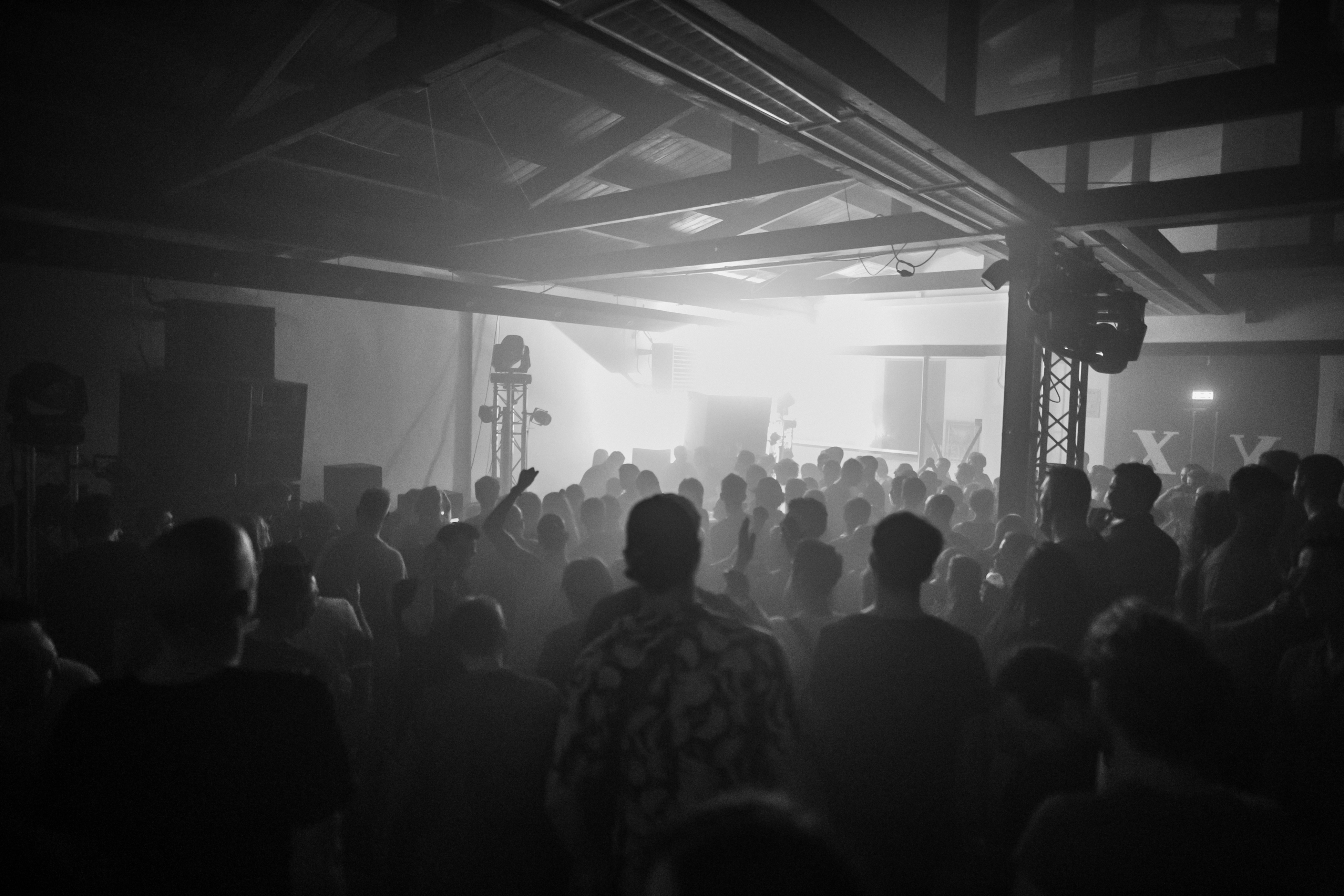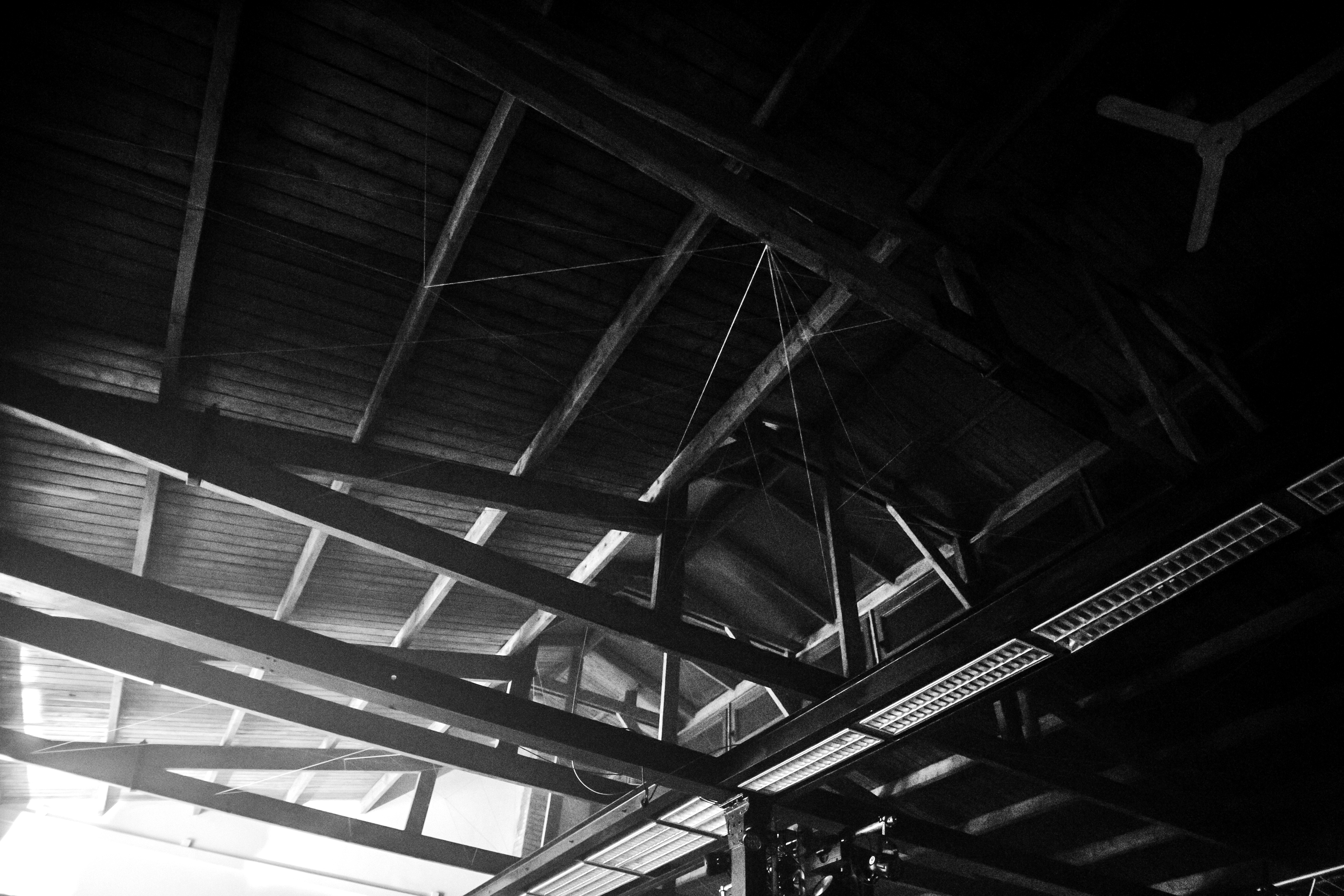 Scene reports
Scene reports
Rødhåd brought his thunderous Dystopian vision to ADE
The age of anxiety
Berlin DJ and producer Rødhåd (real name Mike Bierbach) and all the Dystopian crew are fans of a certain kind of sci-fi movie: The Running Man, The Matrix, Blade Runner – all visions of an oppressive future featuring outsiders who live on the edges of ‘normal’ society. This strand of futurism is a major aspect of the techno aesthetic and has contributed to the sound, feel, venue choice and attitude of their Dystopian events. “The surroundings for our parties are always very important - big, sparse, industrial spaces fit in perfectly with the aesthetic of our sound,” Rødhåd explains.
He’s right, of course: if you’ve heard Rødhåd’s killer album cut ‘Target Line’ featuring Vril, you’ll know it’s a gnarly, diamond-tough stormer of a tune. But to hear it at 4am at body-quaking volume in a warehouse in Amsterdam, in the company of one of the most joyous techno crowds imaginable, reveals its full majesty. Rødhåd uses ‘Target Line’ to open his set at the Dystopian party, part of this year’s Amsterdam Dance Event (ADE), and its dark, driving metallic riff draws a huge roar of approval from his disciples who’ve already been raving hard for hours. It’s a superb way to announce his arrival on the decks at one of ADE’s most anticipated parties.
Situated far from the canals and coffee shops of tourist Amsterdam, Dystopian takes place in a large industrial space on an estate and requires a combination of Google maps, local knowledge and a little luck to find. Mixmag arrives at the venue an hour or so before Rødhåd is due to begin his set, giving us time to acclimatise to the volume and heat, both of which hit with a visceral physicality as you enter the main room. It’s a dark, spartan space with a few spotlights and smoke machines, kitted out with a superb sound; it’s intense, disorientating, inescapable – there’s literally nothing else to do in this room but lose yourself in the kind of music that only reaches it’s full potential when played on a system loud enough for you to feel, as well as hear.

A few hours earlier, Mike laid out his influences and his techno-superhero origin story (a long car journey, Kraftwerk’s ‘The Mix’ album and the realisation that music can be endless). In contrast to the ominous, oppressive sound of his DJing, he’s a sweet guy, animated and quick to smile. This disconnect continues in his productions: new album ‘Anxious’ is a dark, brooding affair, perfectly evoking the classic Detroit techno dystopian aesthetic. It’s not surprising, as Mike cut his DJing teeth playing marathon sets in post-Cold War Berlin, which bore a number of similarities to 80s Detroit: the same stark, industrial wastelands, the same abandoned factories and warehouses used as party venues, and the same sense of a dystopian present.
“It also has something to do with the timing – I worked on the album a lot during January and February in Berlin, where it’s always grey and dark and quite depressing,” he says. “If gabba sounds like East Germany, ‘Anxious’ sounds like Berlin in winter.” It’s a challenging album and while very Berlin, it’s not all targeted at the dancefloor and there are no 909s or classic techno tropes. Instead, it delivers a set of dark, stately and austere tracks, a reflection of Mike’s ongoing development as a producer and his obsession with sound design.
“Cinematic music is a big inspiration for me. I was playing so many parties in the last year, when I got in the studio I didn’t always want to do more
banging techno,” he says.

The ADE Dystopian party is split level: you can look out over the sea of techno pilgrims, or dive into the crowd and become part of the churning machine of exuberant humanity giving it large on the dancefloor. As is normal at Dystopian parties, the booth is an unassuming affair, tucked away on ground level and obscured by smoke. Mike is firmly of the belief that it should be the dancers and the music that are the focus of the night, and not the DJ.
When we finally leave the sun has already been up for a while but the club is still rammed, steam escaping from the door. For Mike, this kind of hedonism is more than just escapism: it’s a reaction to the real life dystopia building outside. “People are going to parties to escape their normal lives and the political situation. [That’s why] I chose ‘Anxious’ as the name of the album. I’m not a fearful person, but there’s that feeling you have in the back of your mind when you go to the airport or you see stuff on TV about bomb attacks and terrorists… when you see Trump, you ask ‘How can this happen?’ And in Germany we have right-wing parties coming back… it makes me anxious. I like the way we live in our open society. With the album, I wanted to show this to people.”
The Dystopian events are proof that you don’t need an anthemic chorus, a major chord progression or a diva vocal to get a room full of dancers to let go. The atmosphere is dark, no doubt, but it’s a celebration of the dark and the mournful. When Mike cuts the bass the entire crowd raises their hands as one; and when he drops it back in, the air is filled with the whoops and cheers of the faithful. It’s joyous party music: “Techno – the rhythm, the beat, it is near your heartbeat. Techno for me is music that you can dance to endlessly.”
‘Anxious’ is out now on Dystopian
Harold Heath is a contributor to Mixmag


